Category Archives for business
Simple Steps to Help Increase Your Customer Retention Rates

Customer retention is one of the most important metrics used to calculate the effectiveness of your marketing strategy. The reason is simple. It costs more to acquire a new customer than keep an existing customer.
You can’t rely solely on new business. Otherwise, you’ll never grow your business. Use these simple steps to help increase your customer retention rates.
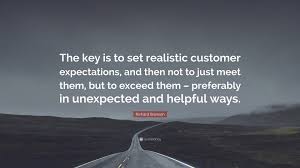
Give Your Customers More Than They Expect
The first way to increase customer retention rates is by giving your customers more than they expect. Deliver more than you initially promised. For example, you could include a free bonus or deliver your product or service ahead of schedule.
Consider the expectations that your customers have. This includes the quality of the product or service, the delivery, and additional features. If you can improve one of these areas without increasing your costs, then you’ll be able to give your customers more than they expect.

Establish Trust with Your Customers
You need to cultivate the relationship that you’ve got with your customers. This comes through the establishment of trust. If customers trust you to always deliver what you promise, then they’ll likely come back for more.
Content can also help establish trust. Giving existing customers access to bonus content, free offers, or PDF guides can go a long way towards building trust. This also helps with the first tip. You’ll exceed their expectations.
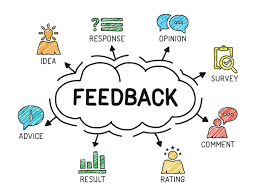
Make Your Interactions More Personable
When you engage with customers, you need to be personable. This includes the use of personalized emails and personal responses to their comments.
Depending on the email marketing platform that you choose, you may be able to automatically personalize your emails. Using a template, the software will automatically insert the first name of the people on your mailing list.
You should also encourage your customers to leave feedback. Ask them questions. You can do this through social media or your email marketing. This lets them know that you’re listening and that you care about their thoughts.
When a customer leaves feedback, either positive or negative, you should contact them as soon as possible and address them by their name. Thank them for their feedback.
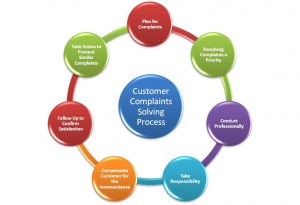
Deal with Complaints Promptly and Directly
You should never make the mistake of ignoring an unsatisfied customer. When someone’s unhappy with your products or services, your first step should be to learn more about their complaint.
Contact customer, remember to personable and ask for more details. Use this information to try and find a way to solve their issue. Even if you need to issue a refund or a replacement, you may be able to save yourself from losing a customer. This could also save you from taking a hit to your online reputation.

Make Sure You Deliver an Exceptional Product or Service
The final step to increasing your customer retention rates is to ensure that you deliver a quality product or service. This ties into the first tip. You want to go above and beyond and deliver a great value.
The bottom line is that if you have something of value at a reasonable price people will buy it and they’ll come back for future purchases.
Think about your favorite cereal, shoes, or vehicles. You continue to purchase from the same company because they deliver a quality product. If you can do the same, then you’ll be able to increase your customer retention rates.
Customer retention is an important metric to pay attention to. Use these steps to begin increasing this key factor. If you’d like to have access to even more powerful marketing tips, as well as a way to generate conversion-ready Internet marketing prospects each month, make more money and join my team, click here to learn about my done-for-you system.
How Link Building Affects Your Marketing Strategy

I get it. You want to be discovered. And search engine optimization is part of that. But it’s easy to stuff keywords into your articles or blog posts anywhere to get visibility. There’s more to online marketing than that. There are specific techniques you can employ to get the best out of your marketing strategy without affecting the readability of your content.
You have to use keywords the right way, or you won’t get noticed like you thought you would. Google and other search engines are smart. They value quality over quantity and can identify keyword density and its effectiveness.
Techniques
Engaging online with people who already interact with you and your website promotes your website to relevant audiences. By showing an interest in your followers, you present yourself as genuine and sincere, and you can provide a more meaningful and customized experience for them. Use a blog to accomplish some of this. You can create shareable content by being unique and original. Linking to other blogs or external sources shows that you foster a community of sharing within the industry and value the opinions of other industry experts.
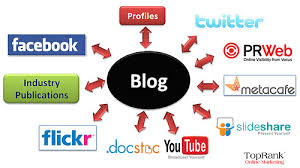
Case studies highlight individual clients and their success stories. It helps other potential clients feel like they have second-hand experience with what you do and makes you more trustworthy. Present these case studies in a visual format like a video showcasing a client interview, or ask your clients to write a quick testimonial you can post on your site.

Pump out news articles or letters to your readers that are relevant to your industry. Keeping up-to-date on the current trends or industry struggles will always benefit you in ways other than direct marketing. Sounding knowledgeable when you speak with clients will get you farther than almost anything else will.

Online promotions or contests engage your social media followers, inspire friendly competition, and offer freebies that everyone likes. This is one of my favorite SEO marketing techniques because it gets the online community buzzing about your brand, no matter what sort of freebie you’re offering.

You should always use these marketing techniques safely and effectively. Ethical business practices and principles are at the core of everything you do. Using these techniques effectively can help you improve your marketing strategy performance and maintain integrity.
Link Building
Search engines are smart enough to recognize quality over quantity, so link building is an essential marketing tool that you shouldn’t overlook. Acquiring links from education websites and other trusted industry experts can drastically increase your rank on any search engine and make you easier to find.
I would even go so far as to say that it’s impossible to rank on Google or any other search engine without links. Here’s why:
- Links are Google’s #1 ranking factor
- Links define the entire internet
- Links point to other great content that deserves to rank as well
- Links transfer power and trust, hopefully back to you
- Links help people discover your site
As I mentioned above, blogging is a great way to start link building. Linking to relevant external sources in your blog helps to build credibility with other experts in your industry. By sharing blogs on social media sites, you begin to develop inbound links as well.
Linking to other blogs on your site sometimes generates a ‘return the favor’ sort of attitude within the community, and simply linking to other people’s work can build a good linking foundation. You can also create organic inbound links by guest blogging on someone else’s site.
Researching the links your competitors use is a useful tool for knowledge building. You can learn a lot from the way your competitors link to other content. You gain valuable insight into their strategy, the keywords they are using, and what they feel is important. Using this information, you can build better links to outrank them.
Calls to action with internal links keep people on your site and help them to discover more about you. Writing content that links back to yourself does many things. It creates a backlink, and it promotes other products or services you offer. You can use these tactics to upsell as well.
Providing your users with genuine, useful content comes in many forms. It is critical that you understand how to use keywords effectively because keyword density impacts the readability of your content. Link building techniques provide structure and understanding to what you publish.
If you desire more money and amazing freedom in your life check out my done-for-you system and join my team now.
Essential Elements of Email Swipes and How to Put Them to Work for You

When you promote affiliate products, in many cases the person actually selling the product is going to provide you with the text you can simply copy and paste into your email. But sooner or later you probably are going to have to create some emails yourself. And even if you don’t, it’s important that you understand why the emails you send out are structured the way they are.
As an affiliate marketer, you are sending an email to the people on your list because you want them to do something: In most cases, purchase your products.
Given the quantity of emails most people receive, it is unlikely that your recipients are going to be willing to spend much time reading all the way to the end of your email. In fact, in most cases you will be lucky if they open it at all.
Getting to the Point
In a sales letter, for example, you have the luxury of several pages to build excitement for your product.
In contrast, with a print ad you have only a moment to use images and tag lines to grab your viewer’s attention. A marketing email falls somewhere in between.
Like a sales letter, the purpose of your marketing email is to drive your reader toward a Call to Action … or the CTA. In other words what it is you want them to do. Unlike a sales letter, you don’t have much time to get them there before their attention wanes. As a result, in many ways a marketing email is like an abbreviated sales letter.
Elements of an Email Swipe
The elements of a sales letter and marketing email are the same:
- Greeting
- Presenting a Problem
- Offering Your Product as a Solution
- Listing Your Product’s Benefits
- Special Offers and Bonuses
- Call to Action
- Link to Product Web Page
The greeting should be simple and straight-forward. If your target audience is a specific group, feel free to reference the group in your greeting:
Dear Internet Marketer:
Your autoresponder program will let you automatically include your recipient’s first name in the greeting, such as:
To: Alice Walker
or
Dear Alice,
If your autoresponder offers this option, use it because it makes the email more personal.
Keep It Simple
You also want to always make sure the content of your email is interesting and on point. Don’t digress or swerve off onto other subjects. Remember that your recipient is receiving dozens, even hundreds of emails per day and they probably are only going to send a few moments on yours, if they open it at all.
Grab their attention early … starting with the subject line … then set up the problem that is relevant to your affiliate product niche and keep the email moving briskly toward the CTA. Your goal is to grab their attention and hold onto it throughout the body of the email so they will keep reading.
In most cases, the email should be no more than one page or a page and a half at most. Try to limit your content to less than a dozen paragraphs, if possible.
So know you know how to create an effective promotional email that is going to convert your customers to buy the affiliate products you are promoting.
Knowing how to effectively use email swipes to keep pushing your customers past the buying point is critical to your success. If you’d like to have access to even more powerful marketing tips, as well as a way to generate conversion-ready Internet marketing prospects each month, click here to learn about my done-for-you system.
What does being true to yourself mean…

I grew up on a small dairy farm in Tennessee with seven siblings and had so many childhood experiences, good and bad.
I was challenged by life itself when at 15 the family moved to what I called “a city life with no morals”. It was actually the suburbs outside of Richmond, Virginia and a major cultural change for a Tennessee farming family
At 17 I was in the Corps of Cadets at Virginia Tech with students from all walks of life where everyone just seemed to be looking out for themselves.
In 1975 I started my first job as a scientist and conservationist with National Forests in an all forester organization that did not want or respect scientists.
I worked my way up through ranger districts, forests, and regions and landed a position in headquarters as a program manager.
I received many battle scars along the way. But, throughout my life I’ve tried to be true to myself. I am still trying today.
For me, being true to yourself in life, and in business means:
-accepting yourself for who you really are, and not pretending to be someone else;
-respecting yourself so that others will sense you are strong and capable of standing up for what you believe in, what you value;
-expressing yourself in a way that broadens the experiences and perspectives of others;
-being sincere, open minded, and fair when dealing with people; and
-making decisions about those things you really should make for yourself.
I hope every day you are working on being true to yourself.
Expanding Your Marketing with Pinterest

Why Pinterest?
Visual marketing has always been a popular tool for businesses. With the introduction of the camera phone, photos have become even more common both in business and recreation and, for many, sharing has become almost as second nature as breathing.
Is Pinterest Part of Your Marketing Strategy?
Up to this point, you may not have thought about Pinterest as a viable marketing outlet, however, every business has a story to tell. Visual marketing will help you tell your story.
Since its launch in 2010, Pinterest has grown to over 70 million users and 25 Billion pins. 500,000 of their users are business accounts. Pinterest’s audience is active and already very engaged. Taking advantage of this would be a good way to expand your marketing and drive more traffic and sales to your business.
Here we’ll look at how some national brands have utilized this particular type of social media to increase their product’s appeal to more buyers.
Don’t Just Show Your Products, Show the Lifestyle They Can Create
Currently, the most popular pins on the site are fashion, food, and home decor. Enter Lowe’s, a brand that has worked to customize its activity to appeal to Pinterest’s audience. Lowe’s Pinterest subjects include everything from inspiration for a new room design to gift ideas that link neatly to their online store.
The result is a digital arena of ideas and 3.5 million followers.
Bring Pinterest to You
Since there are still people who like the process of actually going to a store, finding an outfit, and trying it on, Nordstrom has advanced its marketing process to include Pinterest as an in-store promotional tool. The store highlights its most popular pins by showcasing on site in their store locations.
And, Nordstrom isn’t the only company integrating this new type of marketing approach. Target and others are also transitioning their in-store promotions.
Highlighting the most-pinned items in your store will encourage people to buy. Whether you sell exclusively online with eCommerce or have a brick-and-mortar location, you can highlight your most pinned products to draw more attention to them.
Humanize Your Business
Try forgoing the glossy marketing you may have been using up to now. Straightforward, down-to-earth images can be just as engaging. Just look at Ben and Jerry’s marketing to see how well it can work.
Ben & Jerry’s Pinterest boards include the History of the Company, and The People Behind the Pints. By telling their story through pictures, they’ve provided fans with an invitation to look at their brand’s wider mission.
Your staff, stores, customers, and hometown are all worth celebrating. Showing the human side of your brand builds a more personal relationship with your customers.

(A picture of the author on his morning walk around the soccer fields.)
Work to Inspire Your Audience
Most people would probably think GE would be the last company they would see on a Pinterest board. It would be hard to show the visual side of a manufacturing brand, so GE when another direction and chose to share the inspiration that drives them to innovate. They found a way to draw-in their followers by making the most of their stunning pictures.
Their boards highlight specific ways their products can be used, with titles like FABULOUS Kitchens, Brilliance in Motion, Gifts for Geeks, and Under the Microscope. GE has created an exciting, original profile that appeals just as much to style-conscious follows as it does to techies.
If you don’t think you have a Pinterest-friendly brand, try to think outside the box. Attract your followers through the images that inspire you and your brand’s innovation.
Pinterest is a great visual social platform that is increasingly becoming a powerful source of customers online for store owners.
Visual storytelling is the most popular way to reach your fans right now. Even if you don’t feel like you have the allure that most Pinterest users like remember, it is all about cultivating a body of images that can be used to inspire your followers.
For more ideas on how to make Pinterest the next stage of your marketing campaign, check out ArticulateMarketing.com.
5 Social Media Advertising Techniques to Adopt

Online advertising spending has surpassed spending on television advertising. While PPC advertising is a big chunk of this spending, social media advertising is becoming just as important.
If you’re not already using social media ads to gain new followers or more prospects, then there are a few techniques that you should adopt.
Use Ads to Highlight Non-Sales Efforts
You don’t need to use social media ads to direct users to your various landing pages. There’s more that you can do, such as highlighting non-sales efforts. For example, you can use ads to let consumers know about your charitable efforts or upcoming events.
Many of the biggest corporations employ this method, but it can be just as effective for your own personal brand. You’re able to highlight details that allow people to connect with your brand on a personable level.
Use Ads to Encourage Participation
Another option is to use ads to encourage participation. You could use this to learn more about your target market. Learn more about their interests by using an ad to direct visitors to an online poll or survey.
One option that’s been used quite effectively by various brands lately is to simply ask a question in your ad and direct users to comment on a specific post. This spurs conversation, all of which revolves around your brand, helping you gain new followers.
Use Sponsored Posts to Gain New Followers
Most social media networks have their own form of sponsored posts. These are essentially paid ads, in the form of a social media post. This lets you instantly reach more social media users, increasing your chances of gaining followers.
Sponsored posts can be combined with the other techniques. You can use sponsored posts for your online polls or highlight your achievements. The idea is to gain more attention than you might with other forms of paid advertisements.
Use Targeted Social Media Advertisements
With any social media ad, you can target specific regions, areas, or demographics. Use this to narrow down the focus of some of your advertisements. Consider a form of niche marketing.
When you target a smaller market, you’re likely to face less competition. You can also alter your ads for different regions. This easiest with Facebook targeted ads.
Facebook provides numerous options for targeted ads. For example, you can target Facebook users that have a specific interest or hobby. You can also target users based on their age range or geographic location.
When using Facebook ads, another option is to exclude visitors to your website. If you decide that you want to focus solely on people that haven’t visited your site or know about your brand, this is a great option. You can even alter this to include retargeting.
With retargeting, you’ve got the option to only display ads to users that have previously visited your website. You can even set the time since they last visited your site. This helps increase overall engagement.
Use a Combination of Marketing and Ads
You can’t just rely on paid ads. You also need to stick to your existing marketing strategy. Continue to post on a regular basis. Don’t count your sponsored ads or paid ads as another post on your regular schedule.
You want to continue growing followers and engaging with your audience. Use paid ads as a supplemental technique to boost your social media presence. All of this is geared towards increasing your overall online presence and helping you grow your brand.
Start thinking outside the box. Don’t just use social media ads to direct visitors to a landing page. If you’d like to have access to even more powerful marketing solutions, along with a program for getting conversion-ready internet marketing prospects each month, then click here to learn about my done-for-you system.
Creative Lead Generation

Lead generation is a vitally important part of a digital marketing strategy. If you don’t have leads, people don’t get your emails. Emails generate sales, foster public relations, and give you a place to talk to your customer. Having leads for those emails is a must.
Getting new leads can sometimes be difficult. More and more people are choosing to not opt into emails and this can leave your lead list flat and your email delivery stagnant.
People are more apt to share their emails with you if they feel like they are getting something of genuine value by sharing them. Here are a few creative ways to capture leads that convert.
Use success stories
Odds are that you have at least a few success stories from thought leaders in your industry. Reach out to them and interview them. Turn that interview into a webinar, podcast, or articles.
A conversation with a thought leader about how they became successful is a compelling and valuable piece of content. When you share this content, lead lock it. People who really want to see the content will be more than happy to give you their email in exchange for advice from a thought leader.
Here is some additional information on using stories to generate leads.
Make “Help” videos
Making help videos is another great way to capture leads. If there is a problem that you see a large number of people who use your service having, such as “how do I create a Facebook page” or something of the like, make a video solving the problem.
Not only do these videos provide useful information for your clients, they can also help you gather new customers and clients by helping them solve their problem.
For the best payoff from help videos, create an education center page on your website with a few videos. Have people provide their email address to sign-up and use the free education center. This gives you valuable leads that can turn into new customers.
See more information on Facebook about creating and using video for your business.

Embrace the quiz trend
Quizzes are big right now. They are all over social media and have started to creep into display ads and email inboxes. Use the quiz trend to your advantage.
Quizzes, especially when they are created well, are a great lead generation driver. People love learning what kind of flower they are or which celebrity they act like the most. Usually, the more outlandish the quiz, the better.
Quizzes are also great to push out on social media for some new engagement and boosted traffic and likes on your company’s page. Use the power of the quiz for all it’s worth and it will deliver a host of great results. Check out this short how to article by Josh Hayman.

Give insight into what’s working for you
Have something you are doing that is working really well for you? Talk about it! Host a webinar about it or write a blog or whitepaper. People want to know what works for others and they are more than willing to exchange their email for that information.
Be an information provider and people will start to look to you as an authority. Consider using the pieces as a lead generation ad on Facebook and test the response.
Host a giveaway
Giveaways are one of the easiest and frankly the best ways to gather leads. When you create a great giveaway, people will happily give you their email address for a chance to win.
Giveaways do require some careful consideration when you are using them for lead generation though. You have to be prepared that some people who enter the giveaway may have little to no interest in your company and won’t be good leads.
That being said, giveaways are still a great lead generation tool and can give you a ton of leads in a short amount of time. This is especially true if you use social media to promote the giveaway. Here are some ideas on social media giveaways by Carlos Pacis at Wishpond to get you started.
Want to learn more about getting great leads? Check out my done-for-you system today!
How to Grow Your Blog Into a Business
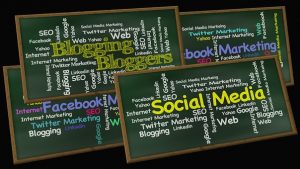
Most of the time, businesses start blogging as a way to build an audience. However, the reverse seems to be happening. More and more people with blogs are starting to monetize their traffic. It makes sense because one of the hardest things to do as a business owner is grow your traffic. If you grow your blog first, you already have a solid following to support your business idea.
Starting a blog is easy, but if you want to make money later, you need to think about your strategy and set yourself up for success. It’s important to know what you need to grow your blog and grow your traffic.
What is a Blog?
A blog is a weblog of content updated regularly. It’s an online publication written in a personal tone, meant to share opinions, teach others, develop a personal brand, or sell products or services. Blogging is fulfilling, but it also requires commitment.
It’s important to be consistent, no matter how often you publish. Your audience grows to expect your posts, so keep at it, and don’t disappoint them.
How to Start a Blog
Finding the time to flush out your ideas and do it consistently is the hardest part of blogging. Once you find the time, starting a blog is straightforward. Consider your opportunities to monetize your blog, determine your audience, and plan a publishing strategy.
You need to think like an entrepreneur to make this venture profitable in the future, so map out the groundwork for your distribution and monetization now.
Ways to Make Money
Most people think of running ads on their blogs as a way to make money, but there are other ways. Building a loyal audience is more important than building a big one, and you won’t earn the trust of your followers by spamming them with ads all the time.
Instead, think of ways you can sell physical or digital products that align with your audience. Sell your services as a writer or designer. Publish a book. Create subscription-based packages with platforms like Patreon. Do paid reviews or become an affiliate for other brands.
You have to enjoy blogging for it to succeed. Dedicate yourself to serving your audience as best you can.
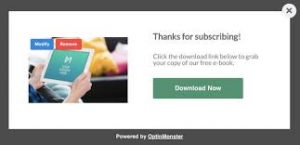
Pick a Niche
With all of the information on the internet, it’s hard to stand out. Try to choose a topic that’s hard to find elsewhere. It’s also critical to choose a niche audience. There are so many internet users that it’s impossible to appeal to all of them.
You can focus on a specific location, present your content in a different style, or focus on a smaller segment of a bigger market. For instance, writing about steakhouses in Kansas City that serve steaks larger than forty-two ounces allows you to focus more deeply on your topic that choosing to write about steakhouses in general.
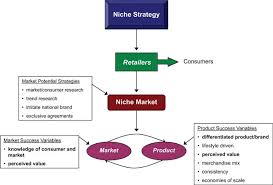
Choosing a Platform
When it comes to hosting your blog, you have two choices. You can host it yourself or host it on a paid platform. If you host it yourself, you have more customization options. You still have to pay a fee, but it’s less than a paid platform, and you have more flexibility in design.
Using a service to host your blog is the best option for those who don’t know a lot about design or HTML. Some options include Blogger and WordPress. Think about how you want to monetize your blog because not every platform gives you what you need.
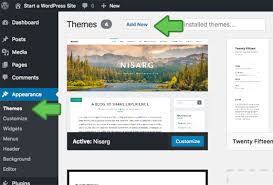
You can also use free platforms like Medium or Tumblr. They have built-in audiences, making it easier for you to get started, but they provide less customization, and your blog design ends up looking like everyone else’s on the platform.
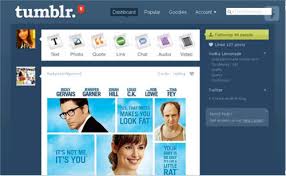
Picking a Name
This is a great time to think about what you want to name your blog. Unless you plan to build a personal brand or portfolio, don’t use your name. Think of something catchy, fun, and descriptive of your brand. This name should reflect your blog’s identity, add personality, and be easy to remember and type.
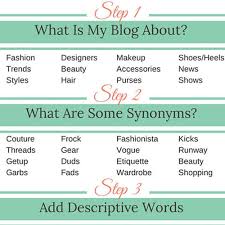
Groundwork for Growth
Thinking about how to grow your blog and having a solid plan in place helps you to build momentum quickly once you get started. If you don’t have a plan, you may end up struggling with distribution because you don’t have a strategy. Publishing is nerve-wracking, but having a plan can alleviate some of that.
Planning for growth involves collecting emails as soon as possible. Use a service like MailChimp to store your subscriber list and make distribution easy. It’s free for up to two thousand subscribers. You can also use MailChimp for signup forms, which is a critical piece of capturing this information.
Embed your signup forms directly into your content with a call to action to subscribe, so the experience is seamless for your audience and easy to manage for you. Here is more information about writing a blog business plan that can give you more ideas.
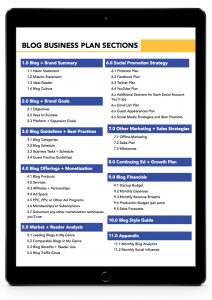
Blogging can be stressful, but it’s also a blast. Use these tips to think about how you can grow your blog to make money later. The great thing about starting a blog is that you don’t have to quit your day job until you start making money. If done right, once you start making money, you’ll grow quickly. Best of luck in your blogging.
Be A Creative Thinker

What is creative thinking? We all need it in our lives and business. Why would I say that? Well, if we all were to set aside some time each day where there would be no distractions and think “outside the box” about our daily tasks, the problems we are facing, and all these challenges that seem to be road blocks, we would be more likely to achieve greater success.
Creative thinking will help you:
-Increase self-confidence;
-Solve problems more efficiently, and develop new ways of dealing with challenges;
-Earn the recognition and appreciation of your clients and peers;
-Be an pioneer in solving problems and meeting challenges of the day;
-Make a difference in how you help people; and
-Be more successful in your life and business.
So, practice creative thinking each day. It is essential you set aside a time for creative thinking that best works for you. Use that opportunity to overcome obstacles and deal with problems or challenges you face.
Double your Email List with Powerful Landing Pages
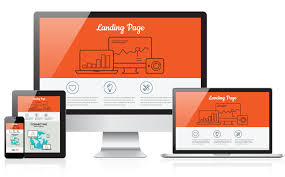
An effective landing page is one of the most useful tools in your marketing arsenal. I’ve used them successfully for many years and I always advocate their use to other people. A landing page is where all of your new web traffic is directed. It’s the main focus of your traffic generating efforts and it’s also the first thing your visitors will see.
And contrary to what you might think, the best page for a new visitor is probably NOT your homepage. A good landing page will grow your opt-in list while preselling at the same time.
Creating a Web page
The first step in creating a landing page is choosing the platform. Landing pages have been made using nearly every method imaginable. The trick is to choose one which is easy for you to use while, at the same time, making sure it works on a variety of devices and browsers.
WordPress is one of the most popular options because it is so easy to use. It has become an industry standard platform and is versatile enough for a variety of uses.
You basically purchase a domain name and web hosting, install WordPress for free, and then install a free or paid WordPress theme (site design). Other options include things like OptimizePress (a fantastic theme for squeeze pages), Drupaal, or even basic HTML if you know how to write code.
Headlines and Sub-Headlines
Search around and you’ll find that headlines are used in all of the most effective landing pages. This is the first bit of text anyone will see. It’s basically the title of your landing page and should grab the visitor’s attention. Sometimes you will only have a few seconds to capture that person’s attention, so the headline needs to be strong.
Sub-headlines can be a great addition when using a lot of text. You can think of these like chapter titles in a book except you’ll be using paragraphs instead of chapters. These are great additions because people might skip over some of the text to get the information they want. Make these strong, too, but save the most important benefits for the main headline.
Landing Page Layout
The way you design and arrange your landing pages is important. It can be a good idea to look at a few successful examples created by other people. The headline should be right at the top, followed by a bit of sales copy and information about the offer you’re presenting under it.
Images can also help add impact to a landing page. Pictures of the product, as well as stock photos and other inspirational images, can help your visitors connect with your offer. Or, in the same place, you can have a short video that says the same thing. Or both!
At the end (or usually on the right side of the screen) is the call to action which, in this case, is an opt-in form.
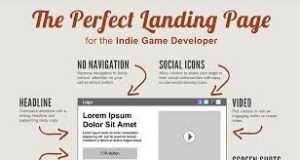
Videos vs Text
For a long time, landing pages were all about text. With web-based video becoming so popular, however, many marketers are utilizing this state-of-the-art technology.
Videos make presenting information incredibly simple. They require less work on behalf of your visitors and can deliver a large amount of information in a short period of time. Videos are inexpensive to produce and there are a number of ways to have one created for you.
Opt-in Box
An opt-in box is a simple form which allows visitors to submit their email address. They usually do this in exchange for a free gift. This is the main purpose of your landing page. When they fill out the form, their address is added to your opt-in mailing list. You can now keep in touch with these leads and present them with great new offers later on.
Building effective landing pages is a bit of an art, and testing to see what works is more scientific. It can be hard to figure out exactly what works over time. Here’s one example.
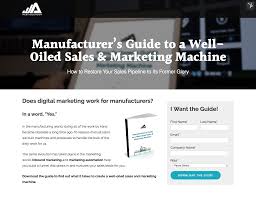
If you’ve tried everything and still aren’t seeing your list explode, then it’s time to discover the secret—the 4th ingredient to my master Sales Formula can instantly double your income overnight. Find out how by clicking here now.
